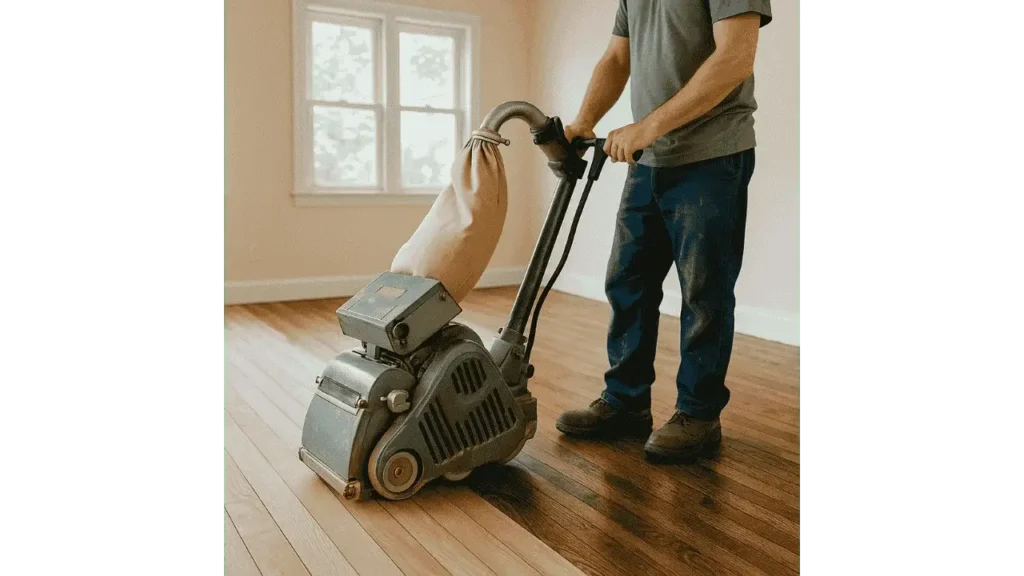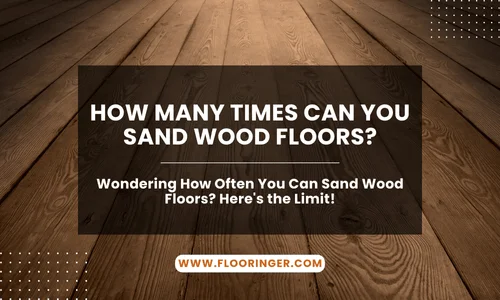Sanding wood floors is one of the best ways to bring them back to life. I’ve done it dozens of times for homeowners who want to erase years of wear, scratches, or dull finish. But the truth is, you can’t do it forever. Every time you sand a floor, you remove a layer of wood, and eventually, you’ll reach the limit. Knowing how far you can go before it’s too much helps you protect your investment and avoid costly damage.

What Determines How Many Sanding Rounds You Get?
Wood Type and Thickness Matter
The type of wood under your feet makes all the difference. Solid hardwood floors, like oak or maple, are thick and can usually handle four to six full sandings. Softer woods, like pine, don’t hold up as well and might only handle two or three. Engineered wood floors are even trickier. These have a thin hardwood veneer on top, and depending on its thickness, you may only get one or two chances.
“Every sanding takes off about 1/32 to 1/16 of an inch,” explains Mike Renner, owner of FloorCare Masters. “Once you hit the groove nails or sublayer, you’re out of room.”
How the Floor Has Been Treated?
If your floor has been sanded poorly in the past or unevenly stripped with aggressive equipment, you might already be closer to the limit than you think. Always look for signs like exposed nail heads or deep dips along board edges. These are red flags.
When Should You Rethink Another Sanding?
Measuring What’s Left
Before you decide to sand again, take stock of what you have. Solid hardwood usually starts out at 3/4 inch thick. If you’re down below half an inch or can feel dips in high-traffic spots, sanding might do more harm than good. Engineered flooring should be evaluated carefully; if the veneer is under 2 mm, skip sanding altogether.
Learn More: How to Remove Moisture from Wood Flooring?
Visible Signs It’s Time to Stop
Are there nails poking through? Are the boards visibly thinning, cupped, or cracked after previous sandings? These are strong indicators that your floor has reached its sanding limit. At that point, buffing or recoating might be the safer choice.
“A worn-out floor can sometimes be saved with a recoat instead of sanding,” says Leslie Campos, restoration expert at Premier Floorcraft. “You get the fresh look without removing more wood.”
Floor Type Breakdown: What You Can Expect?
Solid Hardwood Floors
Solid hardwood is the most forgiving. As long as you’ve got enough thickness left, you can sand it about 4–6 times over its lifespan. That means every 7–10 years in most homes. It’s best to keep sanding even and minimal to preserve more future opportunities.
Engineered Wood Floors
Because of the thin top layer, engineered floors don’t offer much margin for error. If your veneer is 2 mm or less, sanding is risky. Thicker veneers, closer to 4–6 mm, might allow up to two sandings, but always check the specs before you start.
Parquet Floors
Parquet patterns are delicate. Sanding them more than once or twice risks damaging the design or revealing unevenness. These should always be treated gently and evaluated on a case-by-case basis.
Protecting Floors to Minimize Sanding
Smart Maintenance Pays Off
Using pads under chairs, keeping grit off the floor, and avoiding harsh cleaners all help reduce wear. Even better? Regular recoating. A new finish every few years protects the wood underneath, helping you avoid deep scratches that demand sanding.
Final Takeaways
Sanding wood floors is a powerful tool, but it comes with limits. Solid hardwood gives you the most chances, engineered wood the fewest. Before you sand, assess thickness, look for wear signs, and consider alternatives like recoating. With smart care and well-timed maintenance, you’ll get the most life out of your floors without sanding them into retirement.
